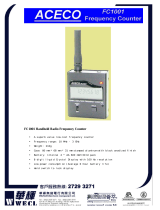xii Table of Contents
Chapter 6 Full Keypad Model Disassembly and
Re-assembly........................................................................ 6-1
6.1 Introduction .................................................................................................................................... 6-1
6.2 Preventive Maintenance ................................................................................................................ 6-1
6.2.1 Inspection.......................................................................................................................... 6-1
6.2.2 Cleaning Procedures ........................................................................................................6-1
6.3 Safe Handling of CMOS and LDMOS Devices .............................................................................. 6-2
6.4 Disassembling and Re-assembling the Radio — General............................................................. 6-3
6.4.1 Radio Disassembly — Detailed ........................................................................................ 6-3
6.4.1.1 Front Cover From Chassis Disassembly ........................................................... 6-3
6.4.1.2 Dust Cover Disassembly.................................................................................... 6-6
6.4.1.3 Speaker and Microphone Disassembly ............................................................. 6-6
6.4.1.4 Keyboard Removal ............................................................................................ 6-7
6.4.1.5 PTT Disassembly............................................................................................... 6-7
6.4.1.6 Chassis Disassembly......................................................................................... 6-8
6.4.2 Radio Re-assembly - Detailed .......................................................................................... 6-9
6.4.2.1 Dust Cover Re-assembly................................................................................... 6-9
6.4.2.2 Microphone and Speaker Re-assembly............................................................. 6-9
6.4.2.3 Keypad and LCD/Keyboard Re-assembly ....................................................... 6-11
6.4.2.4 Keyboard Retainer Re-assembly ..................................................................... 6-12
6.4.2.5 Chassis Assembly/Re-assembly...................................................................... 6-12
6.4.2.6 Chassis and Front Cover Re-assembly ........................................................... 6-13
6.4.2.7 PTT Re-assembly ............................................................................................ 6-15
6.5 Mechanical View and Parts List ................................................................................................... 6-16
6.5.1 CP180 Full-Keypad Exploded View and Parts List ......................................................... 6-16
Chapter 7 Limited Keypad Model Disassembly and
Re-assembly........................................................................ 7-1
7.1 Introduction .................................................................................................................................... 7-1
7.2 Preventive Maintenance ................................................................................................................ 7-1
7.2.1 Inspection.......................................................................................................................... 7-1
7.2.2 Cleaning Procedures ........................................................................................................7-1
7.3 Safe Handling of CMOS and LDMOS Devices .............................................................................. 7-2
7.4 Disassembling and Re-assembling the Radio — General............................................................. 7-3
7.4.1 Radio Disassembly — Detailed ........................................................................................ 7-3
7.4.1.1 Front Cover from Chassis Disassembly............................................................. 7-3
7.4.1.2 Dust Cover Disassembly.................................................................................... 7-6
7.4.1.3 Speaker and Microphone Disassembly ............................................................. 7-6
7.4.1.4 Keyboard Removal ............................................................................................ 7-7
7.4.1.5 PTT Disassembly............................................................................................... 7-8
7.4.2 Chassis Disassembly ........................................................................................................7-8
7.4.3 Radio Re-assembly - Detailed .......................................................................................... 7-9
7.4.3.1 Dust Cover Re-assembly................................................................................... 7-9
7.4.3.2 Microphone and Speaker Re-assembly............................................................. 7-9
7.4.3.3 Keypad and LCD/Keyboard Re-assembly ....................................................... 7-11
7.4.3.4 Keyboard Retainer Re-assembly ..................................................................... 7-12
7.4.3.5 Chassis Assembly/Re-assembly...................................................................... 7-12
7.4.3.6 Chassis and Front Cover Re-assembly ........................................................... 7-13
7.4.3.7 PTT Re-assembly ............................................................................................ 7-15
7.5 Mechanical View and Parts List ................................................................................................... 7-16
7.5.1 CP160 Limited-Keypad Exploded View and Parts List ................................................... 7-16





















